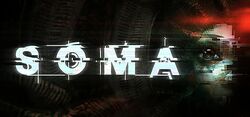Difference between revisions of "HPL3/SOMA"
< HPL3
Jump to navigation
Jump to search
m |
m |
||
| Line 14: | Line 14: | ||
|Script levels, program gameplay mechanics and modify the inner workings of the game, using AngelScript | |Script levels, program gameplay mechanics and modify the inner workings of the game, using AngelScript | ||
|- | |- | ||
| − | |'''[[Hpl3:SOMA/Category:Modules|<center> | + | |'''[[Hpl3:SOMA/Category:Game Modules|<center>Modules</center>]]''' |
| − | |Core game | + | |Core engine and game mechanics that define the behavior of SOMA |
|- | |- | ||
|'''[[HPL3:SOMA/Category:Modeling|<center>Modeling</center>]]''' | |'''[[HPL3:SOMA/Category:Modeling|<center>Modeling</center>]]''' | ||
Revision as of 22:12, 27 July 2020
| Create, organize and release your SOMA mods | |
| Work with the Level Editor and create immersive worlds | |
| The I/O systems are the backbone of every level in the game | |
| Script levels, program gameplay mechanics and modify the inner workings of the game, using AngelScript | |
| Core engine and game mechanics that define the behavior of SOMA | |
| Import, export, add and modify 3D models for the game | |
| Export and add animations for your in-game 3D models | |
| Use the Model Editor to create interactive and dynamic objects | |
| Use the Material Editor to combine Textures and Shaders to create materials | |
| Use the Particle Editor to create 3D or 2D Effects like smoke, sparks, blood and fire | |
| Create audio using FMOD to add a depth and atmosphere to the game | |
| Manage and configure voice lines, voice subjects, and lip-sync | |
| In-depth overview of the Engine's technical features | |
| Step-by-step guides on a variety of topics, created by the community | |
| Useful developer tools, created by the community | |
| Explanations for terms you may encounter |
